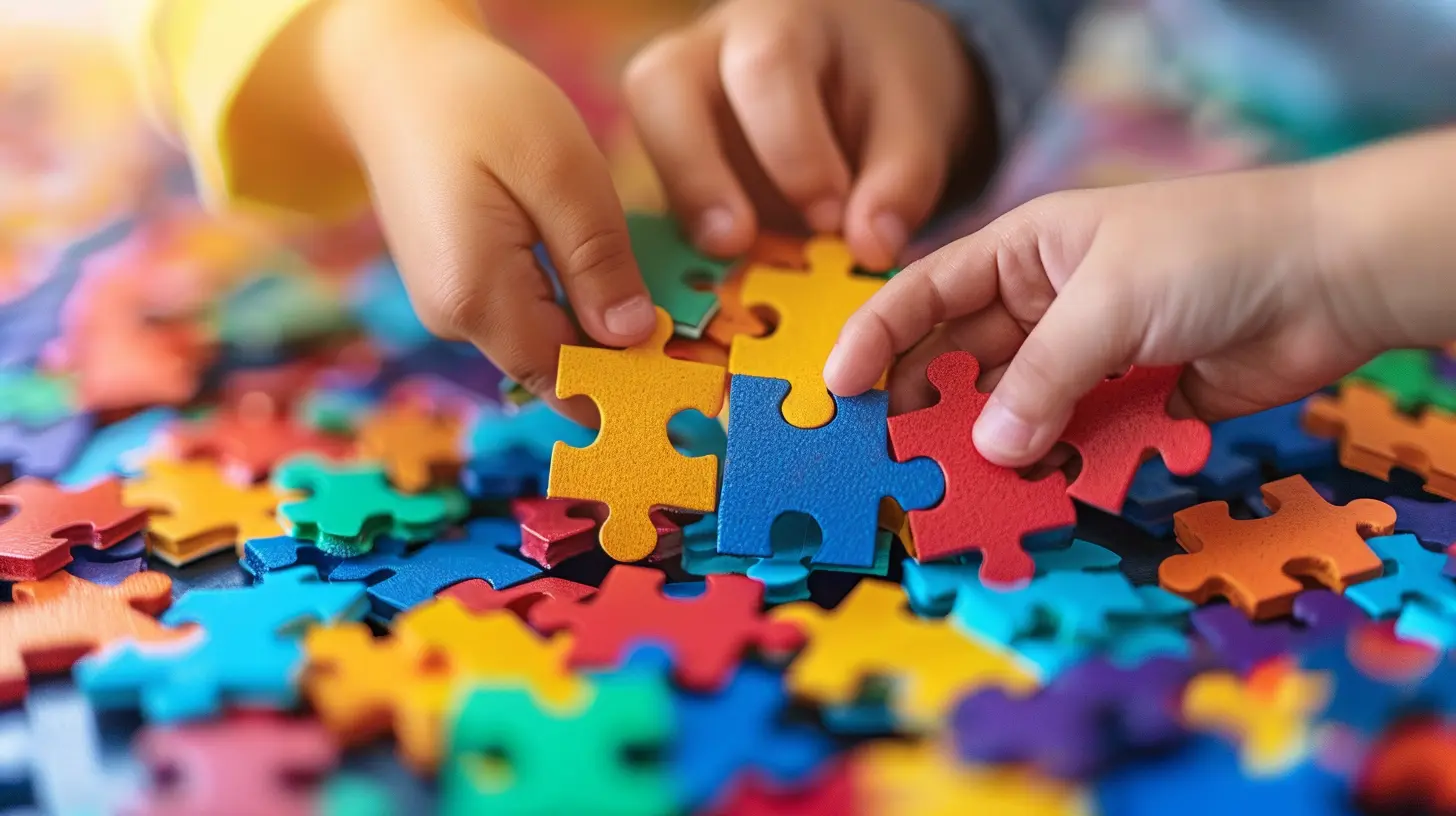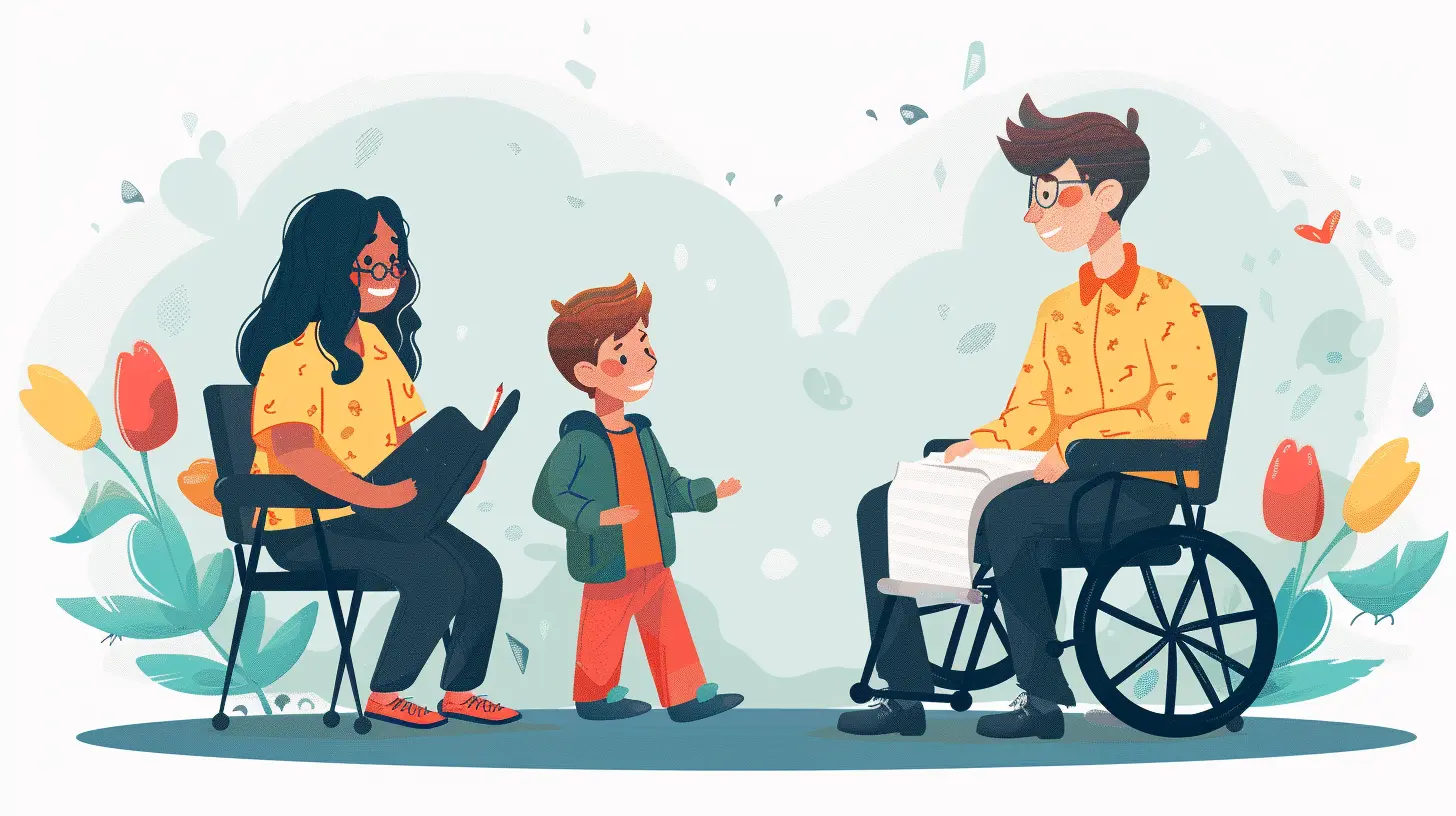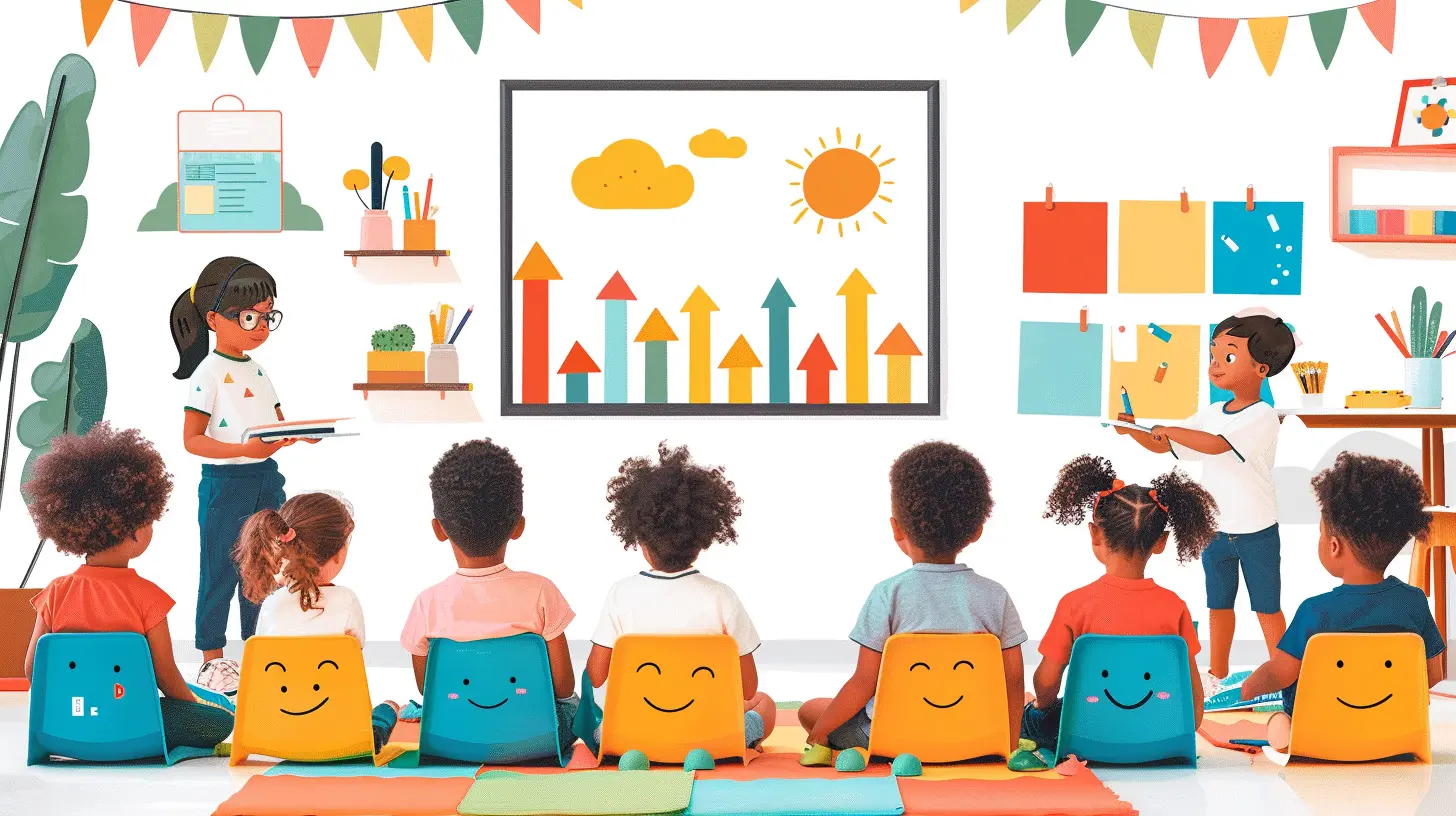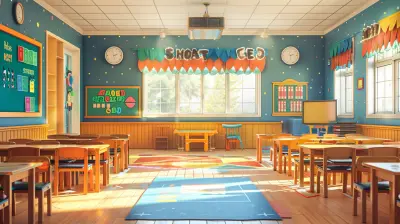How to Create a Behavior Intervention Plan for Students with Learning Disabilities
14 April 2025
Helping students with learning disabilities succeed in the classroom requires more than just academic support—it also means addressing behavioral challenges that may affect their learning experience. That’s where a Behavior Intervention Plan (BIP) comes in.
A BIP is a structured plan designed to help students develop positive behaviors while reducing negative ones that may interfere with their learning. It’s a roadmap for teachers, parents, and school staff to follow, ensuring that students get the help they need in a consistent and supportive way.
But how do you create a Behavior Intervention Plan that actually works? Let’s break it down step by step.

What is a Behavior Intervention Plan (BIP)?
A Behavior Intervention Plan is a document that identifies problematic behaviors, their triggers, and strategies to replace them with positive behaviors. The goal is to help students improve their self-control, social skills, and overall classroom experience.Think of it like a GPS for behavior management—it gives clear directions on how to guide a student toward better behavior while avoiding roadblocks along the way.
Why is a BIP Important?
For students with learning disabilities, classroom behavior can be a major hurdle. They may struggle with impulse control, frustration, or social interactions, leading to disruptions in their learning and that of their peers. A BIP provides structure and consistency, ensuring that interventions are not just reactive but proactive and effective.
Step-by-Step Guide to Creating a Behavior Intervention Plan
1. Identify the Problem Behavior
The first step in creating a BIP is to clearly define the behavior that needs to be changed. Instead of vague descriptions like "the student is disruptive," be specific.For example:
- Instead of "the student misbehaves," say "the student frequently interrupts during lessons by shouting out answers."
- Instead of "the student is aggressive," say "the student pushes peers when frustrated."
Being specific helps in developing targeted strategies for improvement.
2. Conduct a Functional Behavior Assessment (FBA)
A Functional Behavior Assessment (FBA) is a process that helps determine why a student engages in a certain behavior. Understanding the "why" behind a behavior is crucial for crafting an effective intervention plan.The FBA typically involves:
- Observing the student in different settings
- Interviewing teachers, parents, or the student
- Reviewing past incidents and patterns
An FBA helps answer these key questions:
- What triggers the behavior?
- How often does it happen?
- What usually happens afterward?
3. Identify the Function of the Behavior
All behaviors serve a purpose. A student may act out to:- Seek attention
- Escape a difficult task
- Gain access to something desirable
- Express frustration or anxiety
By identifying the root cause, you can tailor interventions to address the function of the behavior rather than just the behavior itself.
4. Set Clear Goals for Behavior Change
Once you understand the behavior, set SMART goals—Specific, Measurable, Achievable, Relevant, and Time-bound.For example:
- Unclear goal: "The student will behave better."
- SMART goal: "Within four weeks, the student will raise their hand before speaking at least 80% of the time during class discussions."
Well-defined goals make it easier to track progress and adjust strategies as needed.
5. Develop Strategies and Interventions
This is the heart of the Behavior Intervention Plan. You’ll need both preventative strategies and reactive strategies to handle behaviors effectively.Preventative Strategies (Before the Behavior Happens)
- Modify the environment – Reduce distractions, offer seating away from triggers.- Teach replacement behaviors – Show the student how to ask for help instead of acting out.
- Use positive reinforcement – Reward good behavior with praise, stickers, or privileges.
- Provide visual schedules – Some students thrive with structured routines.
Reactive Strategies (When the Behavior Occurs)
- Redirect the student – Gently guide them toward appropriate behavior.- Use calm and consistent consequences – Ensure consequences are fair and predictable.
- Offer breaks – Sometimes, a short break can help a student reset before re-engaging.
6. Involve Parents, Teachers, and Support Staff
A BIP works best when everyone is on the same page. Teachers, parents, and school counselors should collaborate to ensure that interventions are consistent across different settings.Ways to involve others:
- Hold regular meetings to review progress.
- Provide behavior tracking sheets for parents and teachers to fill out.
- Encourage positive reinforcement at home to reinforce school expectations.
7. Monitor Progress and Adjust When Necessary
No Behavior Intervention Plan is set in stone. Just like students grow and change, their BIP should evolve as well. Regularly reviewing data and feedback helps determine what’s working and what needs to be tweaked.- Keep a behavior log to track progress.
- Adjust strategies based on student responses.
- Celebrate successes, no matter how small, to keep motivation high.

Common Challenges in Implementing a BIP
Creating and implementing a BIP isn’t always smooth sailing. Here are some challenges you may encounter—and how to overcome them.1. Lack of Consistency
If different teachers and staff members handle behaviors differently, the student may become confused. Solution? Provide clear guidelines and train all educators involved.2. Resistance from the Student
Some students may resist behavior changes, especially at first. Use positive reinforcement and involve them in goal-setting to increase buy-in.3. Behavior Worsens Before It Improves
When new interventions are introduced, students might initially resist. This is known as an "extinction burst"—stay consistent, and over time, the new behaviors will take hold.4. Not Enough Data to Measure Progress
Tracking behavior is vital. If you're struggling to document progress, try using simple checklists, apps, or behavior charts to make data collection easier.
Final Thoughts
Creating a Behavior Intervention Plan for students with learning disabilities takes time, patience, and collaboration. But when done right, it can make a world of difference in a student’s educational experience.A well-structured plan not only improves behavior but also boosts self-confidence, enhances social interactions, and sets students up for long-term success.
If you’re a teacher, parent, or school administrator, know that your efforts truly matter. Every step you take toward helping a child manage their behavior is a step toward unlocking their full potential.
all images in this post were generated using AI tools
Category:
Learning DisabilitiesAuthor:

Bethany Hudson
Discussion
rate this article
7 comments
Gavin McEachern
Creating a Behavior Intervention Plan? Let’s turn challenges into giggles and growth—learning can be fun for everyone!
May 11, 2025 at 8:22 PM

Bethany Hudson
Absolutely! Emphasizing positivity and engagement can transform challenges into opportunities for growth. Making learning enjoyable is key to success!
Veda McKellar
Developing a Behavior Intervention Plan (BIP) for students with learning disabilities is crucial for fostering a supportive learning environment. By identifying specific behaviors, setting clear goals, and implementing tailored strategies, educators can effectively promote positive behavior and enhance student success.
April 22, 2025 at 12:57 PM

Bethany Hudson
Thank you for highlighting the importance of a Behavior Intervention Plan (BIP). Tailored strategies can indeed make a significant difference in supporting students with learning disabilities.
Lysander Barron
Empower every student! A well-crafted Behavior Intervention Plan can unlock potential, fostering growth and success for those with learning disabilities.
April 21, 2025 at 7:25 PM

Bethany Hudson
Absolutely! A thoughtfully designed Behavior Intervention Plan is crucial for helping students with learning disabilities thrive and reach their full potential. Thank you for highlighting its importance!
Giselle McClellan
Thank you for this insightful article! Your step-by-step approach to creating a Behavior Intervention Plan is incredibly valuable for educators. Providing tailored strategies for students with learning disabilities is crucial for their success. I appreciate the emphasis on collaboration and ongoing assessment to ensure effective support. Great resource!
April 20, 2025 at 3:49 AM

Bethany Hudson
Thank you for your kind words! I'm glad you found the article helpful and valuable for educators. Collaboration and tailored strategies are key to supporting students effectively!
Leona Adkins
Creating a Behavior Intervention Plan? Think of it as crafting a recipe for success – just sprinkle in patience, mix with understanding, and serve with a side of encouragement. Bon appétit, educators!
April 18, 2025 at 3:31 AM

Bethany Hudson
Thank you for the creative analogy! A positive approach truly enhances the effectiveness of a Behavior Intervention Plan.
Bernadette Green
This article offers valuable insights into developing effective Behavior Intervention Plans (BIPs) tailored for students with learning disabilities. By emphasizing individualized strategies and clear objectives, it highlights the importance of collaborative input from educators and families, ultimately fostering a supportive learning environment for these students.
April 17, 2025 at 7:41 PM

Bethany Hudson
Thank you for your thoughtful feedback! I'm glad you found the insights on individualized strategies and collaboration valuable in creating effective BIPs for students with learning disabilities.
Tempra Coffey
This article offers valuable insights into developing effective Behavior Intervention Plans. Clear strategies and practical tips ensure support for students with learning disabilities, helping them thrive in educational settings. A must-read for educators!
April 16, 2025 at 3:16 AM

Bethany Hudson
Thank you for your kind words! I'm glad you found the article helpful in supporting students with learning disabilities.
MORE POSTS

How to Help Students with Learning Disabilities Thrive in Remote Learning

Building Your Professional Brand as an Educator

Conducting School Safety Audits: A Step-By-Step Guide

Empowering Students to Take Action on Environmental Issues

The Science Behind Ice Cream: Exploring Freezing Points and Mixtures

The Intersection of Social Justice and Environmental Education